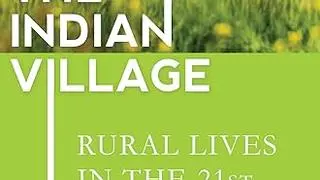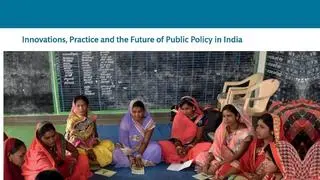Call it making up for lost time, but as a recent ‘invitee’ to the great ‘tea party’, I have been on an almost manic consumption spree of any and everything related to tea - the world’s number one drink after water. From resolutely having resisted the beverage all my life, to suddenly stocking my pantry with artisanal and rare teas from around India and the world—and making sure I visit at least one new tea producing region every year—my reverence...nay, obsession with it is a new and ever-evolving one.
No big surprise then, that, as an equally voracious reader, my reading list features all kinds of books related to tea. Be they historical accounts laced with assorted tales of espionage of how tea was first smuggled out of China to make its perilous westbound journey. Or simply guides on how to brew the perfect cup of tea. I have been enjoying my newest dalliance to the hilt.
And so, it was with unbridled fascination that I recently chanced upon and subsequently ‘gourmandised’ my way through this book. One that proved to be the perfect companion to my many quotidian cups of tea. Black. Never with milk. Always with lemon and honey.
Cup Runneth Over
Bringing together her culinary expertise as a trained chef and tea sommelier, along with her wide-ranging travel, Pallavi Nigam Sahay imbues her latest book A Sip In Time with oodles of passion and reverence for tea. She does this by deftly juxtaposing her personal experiences of drinking various kinds of Indian teas with their individual nuances and qualities that make them coveted worldwide. All this, while giving our indigenous tea varieties, both a historical context, and updated currency.
The author talks of discovering India’s first brew, aka.phalap, as she journeys into the densely forested areas of Upper Assam. Handcrafted by the Singphos, a local tribe, this ancient variety of black tea that is first smoked and then brewed is as different as it can get from what most of us know as just plain old ‘tea’. Sahay also talks of the curative properties of tea as kadhas–medicinalconcoctions believed to cure a number of ailments—made using tea as a base along with an apothecary cabinet full of herbs and spices.
Nostalgia is another main ingredient of this book as we are given glimpses into great affinities like tea and the rains. Or tea and train journeys for that matter. Speaking of which, the reader is shown the great socio-cultural diversity amidst unity of India through the prism of tea. Be it with Mumbai’s notorious cutting chai, Haryana’s khadi chammach waali chai, Hamachal Pradesh’s Kinnauri chai or even with relatively unknown iterations (to me, at least!) like Pune’s amrutulya chai or Rajasthan’s nagori chai.
Conscious Coupling
From the “very propah” English custom of enjoying evening high tea—with a variety of savoury snacks, pastries and the ubiquitous scones with jam and clotted cream—along with our very desi propensity for afternoon chai sessions over hot pakoras, crispy matris and aloo bondas served with a variety of chutneys, snacks and tea time are a marriage made in culinary heaven. Keeping this as the main thrust of the book, the author comes well-equipped with an arsenal of easy-to-follow recipes.Over 60 tea time snacks and savouries to be specific.
Recipes and cooking techniques that she has collected from a plethora of sources like friends, colleagues and most importantly family members. This means, we get anecdotal takes on typical Indian tea snack recipes like that for the fennel and cardamom-infused Bihari thekua (pg.19) and Gujarati methi thepla (pg.75) among others that dot the book. Each comforting in their familiarity and rustic appeal.
Tips like using oil instead of butter in a cake to keep it moist, while adding buttermilk to it enhances its crumbliness (pg.129), among scores of others are invaluable nuggets of information. Ones that seem as though coming from a kindly friend who wants to help you do better in the kitchen.
Further into the book, we are introduced to more exotic treats like the semolina and orange syrup-infused basbousa cake (pg.109) from the Middle East that’s teamed with Assam orthodox tea. Even a hipster-chic rendition of the very au courant avocado toast (pg.157) manages to find a place in the book. This one, the author chooses to pair with the bergamot orange-infused, floral tasting earl grey tea.
Off Notes
But speaking of tea and more so for a book that pivots around this all-important axis, it’s a little disappointing to find not a single recipe for renditions of the beverage. I would have loved a few recipes for versions of tea like the mint-imbued Parsichoi (yes, not chai, but choi!) that we taste so much in places like Bombay’s iconic Irani cafés. Or even for a fragrant Kashmiri kahwa, for that matter.
And while the author does speak in fleeting words of dishes like lahpet thoke, the Burmese fermented tea leaf salad, there are also no recipes provided in the book using tea leaves or even tea water as an ingredient! Not even for a Punjabi chhole that gets its colour from the addition of black tea water to the boiling chickpeas.
Also in terms of layout and design, not only are the photographs of the corresponding recipe dishes not evocative enough in their colour scale, but the choice of printed paper is way too dull for a book on such a vibrant subject.
I also found the idea of breaking up the recipes (especially the ingredients’ list) over two pages in numerous instances quite disconcerting and odd given the otherwise generous dimensions of the almost coffee table sized book.
But these are just minor, observational critiques. Ultimately it all boils down (do pardon the pun) to the act of enjoying a fine book that ensnares the reader,keeping one hooked onto its refreshing goodness.
Quite like the very beverage that it helps celebrate and champion down to the ‘T’!
(A wearer of many hats in the food and travel space, Mumbai-based Raul Dias is a food-travel writer, a restaurant reviewer, and a food consultant)
About the Book
A Sip In Time - India’s finest teas and tea time treats
Pallavi Nigam Sahay
Hachette India
256 pages; ₹799








Comments
Comments have to be in English, and in full sentences. They cannot be abusive or personal. Please abide by our community guidelines for posting your comments.
We have migrated to a new commenting platform. If you are already a registered user of TheHindu Businessline and logged in, you may continue to engage with our articles. If you do not have an account please register and login to post comments. Users can access their older comments by logging into their accounts on Vuukle.